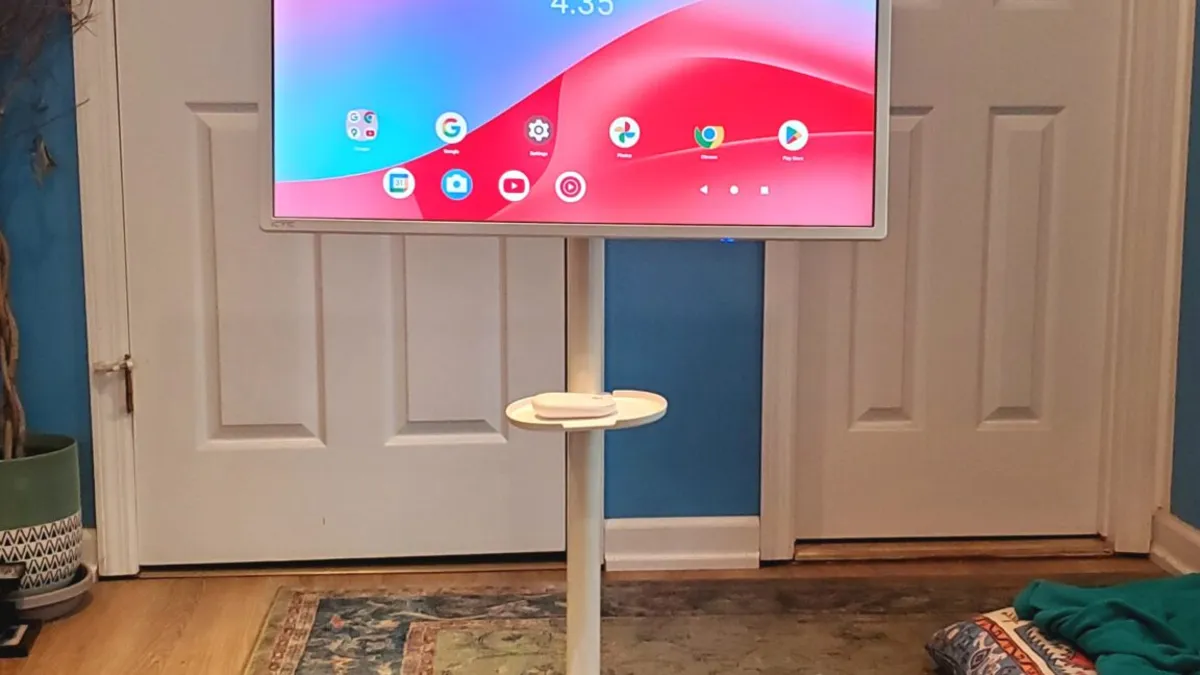
In recent years, LG has sparked a unique trend in portable technology that has gained traction across various online electronics retailers, including Amazon. The launch of the StanbyME in 2022 marked a significant shift; this innovative device is a $1,000, 27-inch tablet powered by LG's webOS but notably lacks a traditional TV tuner. LG describes the StanbyME as a “wireless private TV screen with a built-in battery,” making it highly portable and ideal for not just streaming shows and movies, but also for video conferencing and online lectures.
Today, the StanbyME faces competition from several similar devices, primarily from smaller brands running on Android. One such device is the KTC MegPad 32-inch Android Tablet (A32Q7 Pro), which I have been testing at home for several weeks. This has left me pondering what is driving the growth of these niche, yet expensive, hybrid devices. As we navigate a tech landscape saturated with large-screen TVs, compact tablets, and cherished laptops, I'm curious about the ongoing relevance of such products.
Unlike LG’s StanbyME, the KTC MegPad does not operate on a smart TV OS; instead, it functions as a 32-inch Android 13 tablet. Despite this difference, KTC promotes the MegPad’s capabilities as a versatile streaming tool, and I found that to be one of its most appealing features. By treating the MegPad as a mobile smart TV, I was able to enjoy a living-room-like experience in various spaces throughout my home. Watching TV in bed with a larger, more comfortably distanced screen was a game-changer compared to using a laptop or standard tablet.
Flexibility is another significant advantage of the MegPad. I prefer not to have a permanent TV in my bedroom, which makes the MegPad ideal for my needs as I can easily maneuver it to face away from me or roll it out of my room entirely. This makes it a practical solution for households with multiple individuals having different entertainment preferences. For instance, while my partner enjoyed gaming on our primary 55-inch TV in the living room, I could comfortably stream content on the MegPad.
While the MegPad offers easy mobility compared to traditional wall-mounted TVs, it does come with some challenges. Weighing in at 40.3 pounds and equipped with five 360-degree wheels that do not lock, transporting it can be cumbersome, especially over floor transitions or uneven surfaces. Although the fully rotating screen enhances its usability, it requires some effort to move around the house.
Although the MegPad excels in versatility, it's crucial to recognize that it is not a traditional TV. Lacking a tuner, it may not meet the needs of some viewers, although this deficiency is becoming less significant in the streaming era. The MegPad operates on Android 13, which eliminates vendor licensing fees associated with smart TV operating systems like Android TV or webOS, offering a more streamlined user experience without integrated ads typically found on those platforms.
As an Android tablet, the MegPad is compatible with a broader range of apps, including productivity tools like Google Sheets and Microsoft Word, which are often unsupported on smart TVs. With 128GB of internal storage, it provides ample space for documents, photos, and other files, although it lacks the integrated channels and live-TV features typical of a smart TV. The absence of a traditional remote control is another drawback; while it comes with a basic Bluetooth mouse, navigating the device can be cumbersome due to its large size and touchscreen reliance.
While the demand for dedicated portable TVs has diminished over the years, the MegPad and similar devices have emerged as the new stand-ins for traditional TV sets. As large-screen TVs dominate the market and portable gadgets like phones and laptops become the go-to for on-the-go viewing, products like the MegPad offer a unique alternative. Even LG's StanbyME Go, a briefcase-style 27-inch display, is a far cry from the portable TVs of the past.
The MegPad's versatility positions it well in homes where space and viewing needs vary. KTC markets the MegPad as a pseudo-TV, highlighting its ability to stream popular services like Netflix and YouTube without the need for a PC. Keywords such as portable TV, rolling TV, and mobile TV are prominently featured on its product page, despite the fact that it is not a true television. KTC describes the MegPad as a hybrid device that incorporates features from smart displays and large-screen tablets.
While I find the MegPad and similar devices intriguing, recommending them can be challenging due to the availability of more affordable personal gadgets that take up less space. The MegPad is particularly useful in specific scenarios, such as providing a screen for entertainment during recovery periods. Its growing presence highlights the evolving relationship between smart TVs, tablets, and monitors. As technology continues to advance, consumers must consider their unique needs when choosing their next screen, whether it be for computing, entertainment, or mobility.
As LG's StanbyME continues to influence the market, other brands like Samsung are also exploring this innovative form factor. It seems that the convergence of technology is reshaping how we view screens in our everyday lives, paving the way for a new generation of hybrid devices.